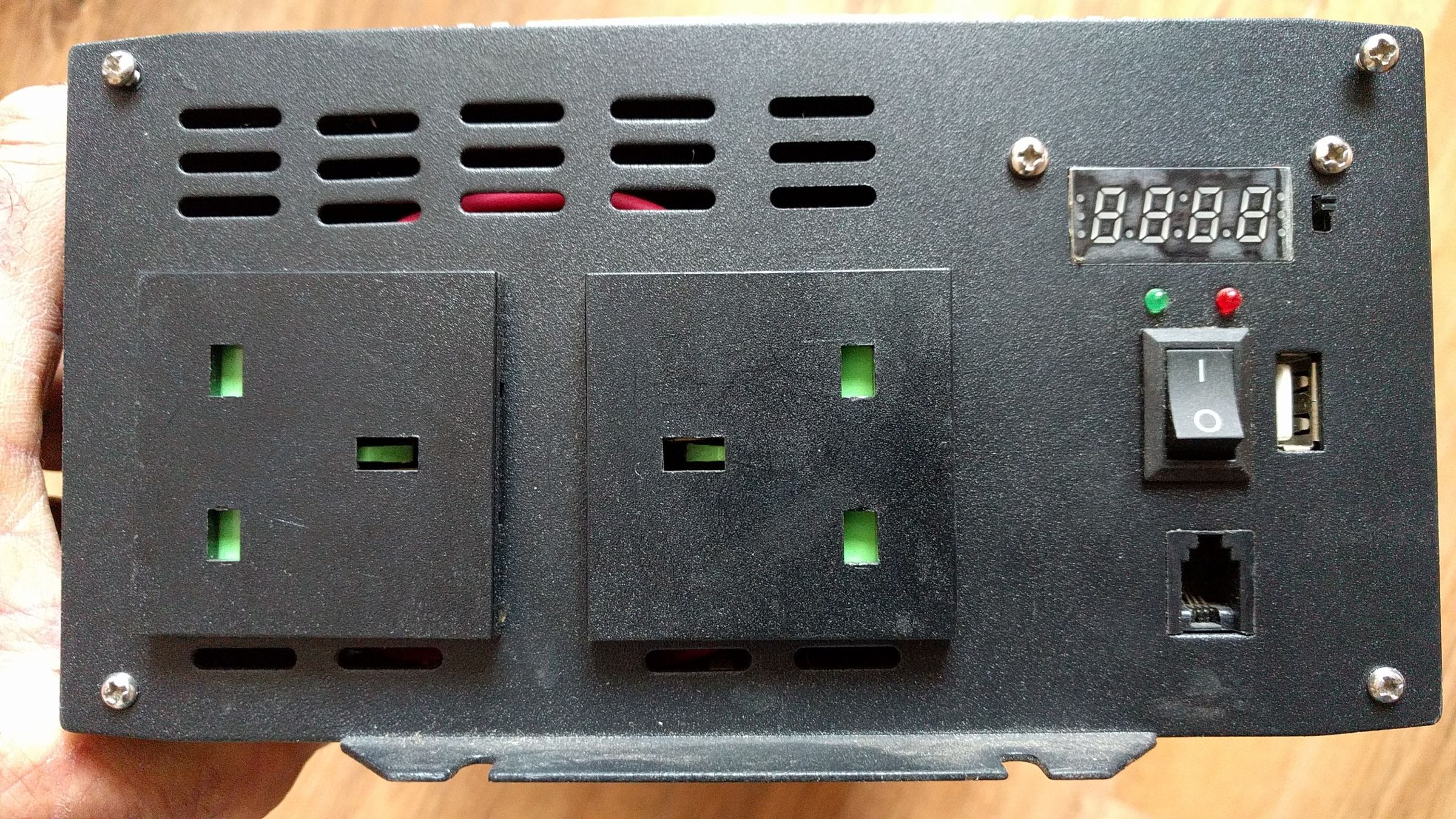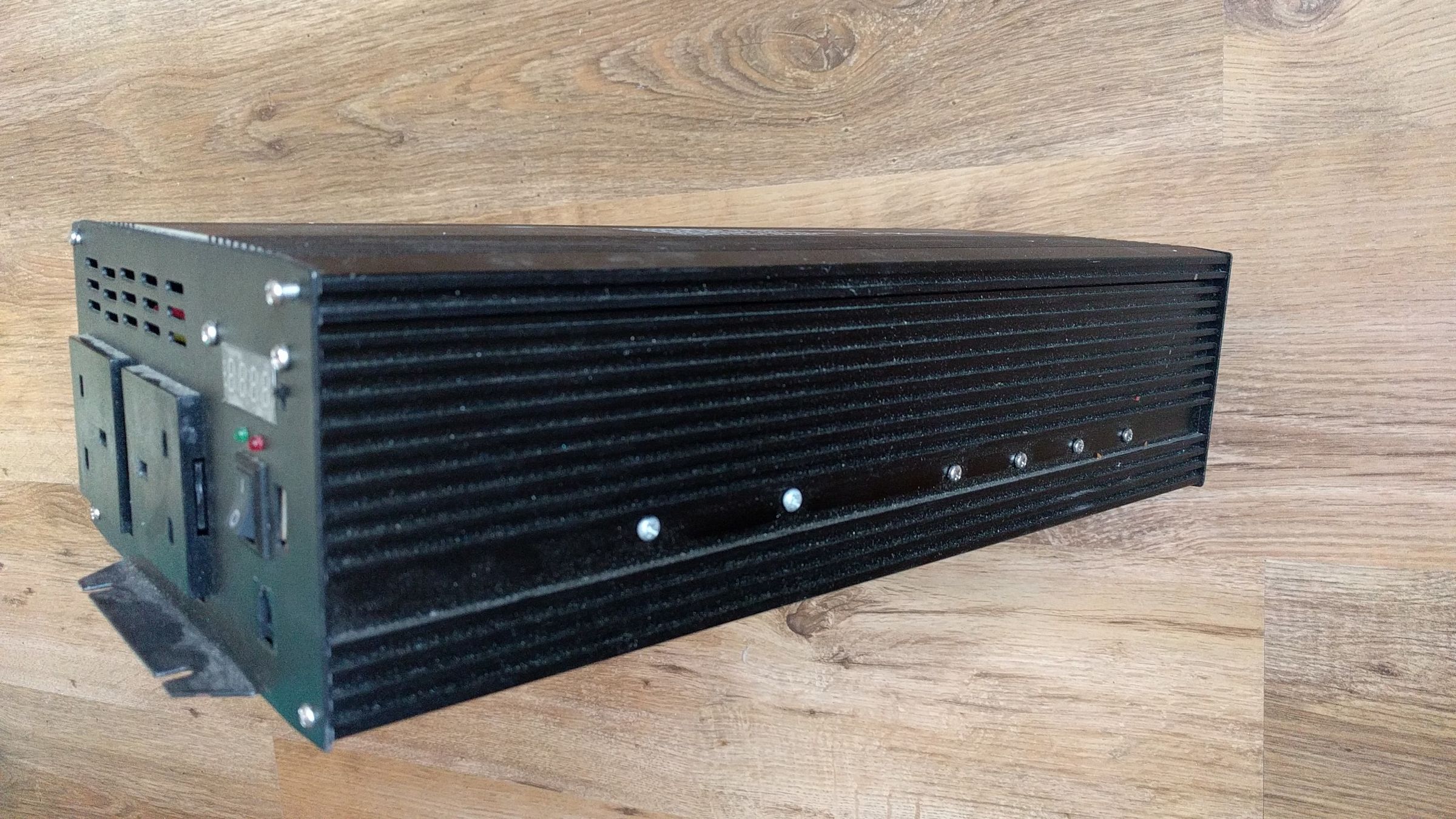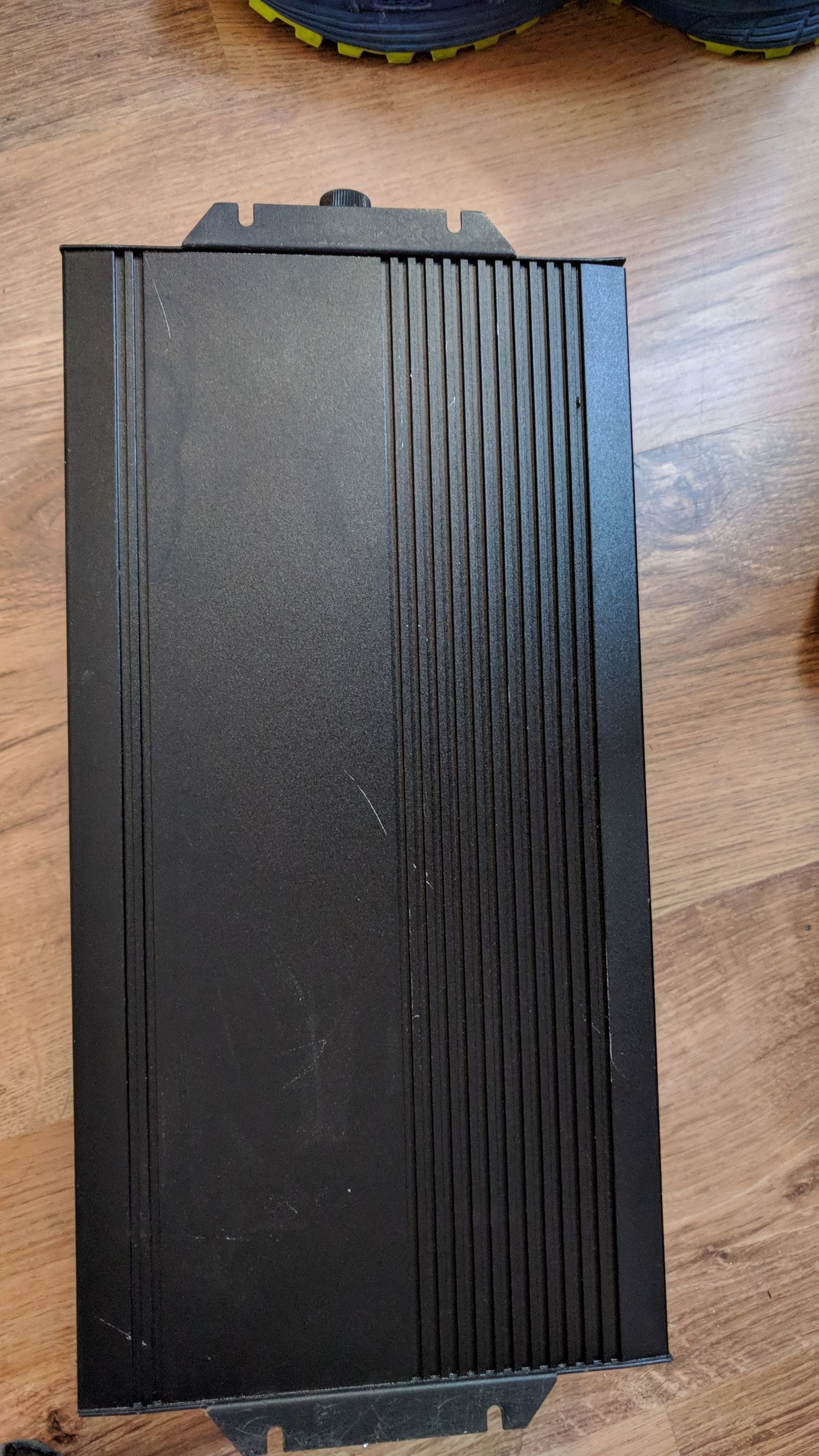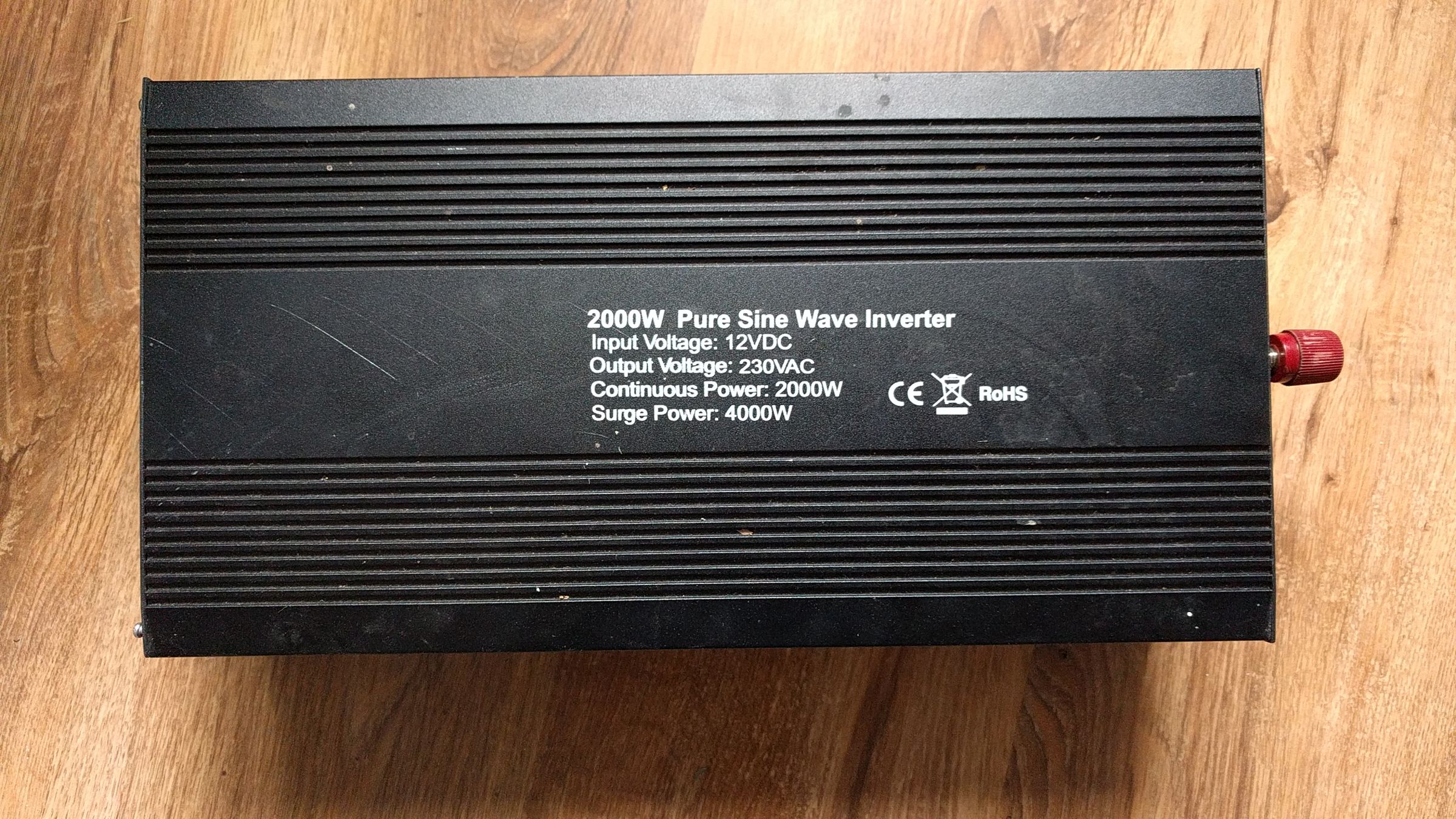

wetfoot
Member-
Posts
57 -
Joined
-
Last visited
Content Type
Profiles
Forums
Events
Gallery
Blogs
Store
Everything posted by wetfoot
-
Please see my edit to my question. Do you think this makes it a business? Please see my edit to my question. Do you think this makes it a business or trade?
-
For many years my son has lived on a canal boat in London, moving to a different mooring every fortnight as required. Consequently, as he doesn't have a fixed address unless he permanently moored in a marina, he registered himself at my address for voting purposes and to have an address for correspondence. Question: If and when he sells the boat will he be liable for capital gains tax unless he can prove it is his main residence? If so, how can he prove it is his main residence without having a fixed address for the boat? The only 'address' he has is mine. This must be a common problem for people living on canal boats. Any advice would be much appreciated. Bit of additional info prompted by some of the replies. He is paying off a small private family loan over 5 years for part of the purchase cost at £400 pm, nearly paid off. Two years ago he needed to go abroad and rented the boat to a friend for £400 pm to cover the loan until he came back. He returns to the uk permanently in a couple of weeks. Does this make any difference, as HMRC might consider the rental period to be a 'business', rather than a residence?
-

Webasto failed with water logged circuit board?
wetfoot replied to wetfoot's topic in Boat Equipment
Yes, its not advisable but it's impossible to avoid when you have an aluminium heater, a copper coil in the calorifier, steel radiators, brass olives and rad fittings etc. even if most of the pipework is plastic. -

Webasto failed with water logged circuit board?
wetfoot replied to wetfoot's topic in Boat Equipment
That's how I'm going to modify mine as well when I go back to reinstall the webasto. I'm changing the open twin pipe header for a closed twin pipe one with a PRV cap that opens at 1.2 bar. Haven't had it delivered yet but I'm not entirely sure that there will be room between the two pipes to fit in two tees and a byass valve so that when the valve is open the flow can go in a reasonable straight line. I'd rather not have a complex run with lots of elbows etc. just to fit in the valve as that will just cause more turbulence. Still, I'll see when it gets here. The 'proper' twin pipe closed headers are really expensive aren't they for what is essentially just a thick plastic bottle? Cheapest I found from MellorOnline at £70 by the time you've added VAT, delivery and VAT on the delivery. Most were over £100 ex vat. For the engine header tank I got a small one from a car breakers for a few quid but its hard to find twin pipe ones in car breakers and even if you can, the inlet pipes are very small diameter -

Webasto failed with water logged circuit board?
wetfoot replied to wetfoot's topic in Boat Equipment
No its OK, the system is a combination of copper pipe and plastic barrier pipe with the odd bit of rubber pressure hose for connections -

Webasto failed with water logged circuit board?
wetfoot replied to wetfoot's topic in Boat Equipment
Here is the relevant page from the installation instructions for a Thermotop C page re header tank from installation instructions.pdf -

Webasto failed with water logged circuit board?
wetfoot replied to wetfoot's topic in Boat Equipment
Ok, I've found the problem. It wasn't condensation at all, Two pin holes had developed in the heat exchanger, both under the circuit board. One went through into the water jacket and the other went through into the water intake pipe. I've attached a pic with a fine wire pushed through the holes. It was corrosion from inside out but I've always tried to maintain 25% Mono Ethylene Glycol antifreeze in the system, as recommended by Webasto. However further research shows that that Mono Ethylene Glycol solution is corrosive to aluminium when it gets hot and acid formation occurs. It also causes pitting of aluminium when in the presence of dissolved oxygen and / or chlorine as halide ions are formed. Pitting is what I had, right through into the space where the circuit board is. Aluminium has a self healing protective film on it that is stable when the coolant is at a pH of between 4.0 and 8.5 so the acids could cause it to drop below a pH of 4.0 where the film won't self repair. It also seems important to reduce oxygen and chlorine getting dissolved in the coolant water. If you use a closed system the oxygen gradually gets absorbed and not replaced so that solves one problem but Webasto recommend a twin pipe, open, header tank with the water flowing through the tank continuously (which is what I have). Whilst this might be great at getting rid of large air bubbles, the continuously circulating water surface open to the atmosphere is absorbing oxygen all the time! It also seems likely that I had a lot of chlorine in the water I filled up with as I filled the system from a standpipe in London, where the tap water is heavily chlorinated. So it looks like a combination of using London water and an open, flow through header tank is about as bad as you can have! I've now got a new heat exchanger and circuit board but I think when I re-fill the system I might do it using de-ionised water instead of London tap water, put 25% glycol in it and replace the open twin pipe header tank with one of the closed, pressurised ones (I've found one for £65 which is less than the £125 some places are charging for a plastic bottle but still a lot!). I've put all this down in case others who have webasto heaters in their boat want to take steps to minimise corrosion as well. -

Webasto failed with water logged circuit board?
wetfoot replied to wetfoot's topic in Boat Equipment
@Mad Harold Actually, that's a really good idea. There is no real need for the plastic cover and gasket over the electronics in the location it is used. I could just put a loose bit of something, even just a square of Goretex or something like that over it, just to keep out excessive dust and stuff and leave it open to the environment. The wiring plugs I could do away with as well and solder some wires directly to the board, attaching them with 'chocolate block type' cable connectors. Little (unnecessary) physical protection but zero places for condensation to collect either. @Loddon - No I keep everything, never know when it will be useful so I still have the old broken unit with missing pins on the circuit board. My garage is stuffed full of everything that ever broke in my life. My Dad was the same, He used to say "It'll come in handy even if you never use it") If I don't get a freebee unit on warranty then, to quote a 70's series - We can rebuild him! Thanks all. (but if anyone has had the same issues do let me know.) -

Webasto failed with water logged circuit board?
wetfoot replied to wetfoot's topic in Boat Equipment
Its possible but unlikely. I deliberately led all cables above the shield so that the shield was the last line of defence so to speak. (in the photo there is a cable under it but that's just because after I removed it I screwed it back up again with one screw just to take the photo. ) Normally its just the heater underneath so any drips caused by cables would run down the outside of the shield and drip harmlessly to the floor. Bee's suggestion seems the most plausible from a physics point of view (I'm a physicist and an engineer) but it relies upon the O rings and rubber gaskets not working and doing their job in a system that is designed to operate in harsh environments. It supposed to have a 3 yr warranty but I don't suppose that's worth the email it came in. -

Webasto failed with water logged circuit board?
wetfoot replied to wetfoot's topic in Boat Equipment
That was my feeling too. I have no choice about it being fitted on top of the heat exchanger, that's the way it's made. Partly this is so that one component on the board, a thermistor, can be in contact with the heat exchanger to measure the water temperature. I can't see what two O rings in the power socket didn't stop water getting in. They're more or less the same plug and socket as used on the brake pad wear indicators on my car and they get sprayed with salty water every day in winter without leaking. I would have thought that the rubber gaskets on the cover would have worked too, since these heaters are fitted under the rear wheel arch of Swedish land rovers! Be interesting to see if anyone else has had this issue. If I eventually fork out for another one I think I'll cover the circuit board with silicone grease or even encapsulate it in silicone rubber. Er... good idea but it looks like that might not be until I've forked out another £800 for a replacement unit! -

Webasto failed with water logged circuit board?
wetfoot replied to wetfoot's topic in Boat Equipment
Where is this huge amount of water? The water on the floor is just a small amount that came out of the flow and return pipes when I took them off prior to removing the heater. It was all dry around the heater before I started work. I don't agree that the shield will cause more drips as it is mounted on wood so it is pretty much at the same temperature as the air all the time. But even if drips could form underneath it, the rate of curvature and the size of the thing is designed so that any drips on top, or underneath, will run down the curve and fall to the floor 5 or 6 cm away from the side of the heater, not on top of it -
Now on my second webasto thermotop C., both have been fitted on the wall of the engine bay mounted on a plywood backplate The first one failed for a few reasons, burner, using red diesel etc. which I avoided in my second one, but also because one of the pins in the power socket (X2), second one in, next to the diagnostic lead socket, had completely corroded off due to water getting inside the power socket. Thinking it was due to condensation falling of the roof, when I fitted the new heater I put a curved stainless steel shroud completely over the heater so that any drips from the roof of the engine bay can't fall on the heater. The second one has worked well for two years but has now failed. When I took it out not only was the same power socket wet inside with severe corrosion of the pins where it had been arcing but the circuit board was sitting in a pool of water and had shorted out and burnt. I am at a complete loss as to how so much water could get inside the circuit board housing when it has a plastic cover with a rubber gasket and the only water available is water vapour in the air. Its a lot of water if it's due to condensation, especially as its sitting on top of a hot heat exchanger Has anyone else had this problem? Any ideas what I can do to prevent it happening a third time if I buy yet another heater?
-
Ok, thanks for the replies, some of which were very helpful. In the end I went with HeatMyBoat and ordered a 70 litre twin coil, vertical calorifier for £345. I'll use the old pressure relief vale from the old one that I'm taking out. The boat already has an accumulator. I did consider getting a mixer valve as well but since the shower is a mixer shower and both the sink and basin taps are single outlet mixer types there seems little point since the mixing is done at the point of use and getting scalded is not usually a problem if the cold tap is run first. Besides the Webasto only outputs at 72 degrees so the water in the calorifier won't get ridiculously hot. The engine is not run frequently enough nor for long enough to get the water up to full engine temperature. This is all interesting stuff though
-
I'd probably fit all those myself anyway. Not only will I know it has been done properly but my old calorifier already has some fittings on it that I could re-use. Maybe surecal are expensive because they supply all those fittings as well
-
It looks like I'm going to have to replace my calorifier as its leaking and I can't seem to fix the leak in spite of one soldered patch and two epoxy patches on top. I'm looking at around 72 litres, vertical, twin coil, about 900 x 350mm I've seen some that I like from heatmyboat.co.uk and their prices are reasonable but the photo on their site is identical to that on the Kuranda site where not only are the sizes slightly different but the prices are over double those on heatmyboat.co.uk. In addition, the contact email for heatmyboat is actually the same as that for cylinders2go.co.uk. I'm new to this. Has anyone had any dealings with heatmyboat? Are they legit? Has anyone bought a calorifier from them and found it OK or not OK? regards
-

Drivebelt conversion to get higher alternator speed?
wetfoot replied to wetfoot's topic in Boat Building & Maintenance
Yes, the company confirmed their fit doesn't change the ratio. The alternator is a unipoint ALT 4036 which is the same as a Lucus A127, default pulley size is 66mm OD. engine speed is about 600rpm at idle and about 1,000 rpm flat out (whether prop engaged or not. Engine is a Yanmar 4JH4AE @Patron: I don't understand why I shouldn't charge at idle, cars do it because their engines typically run faster. Charging at idle would also load the engine nicely even if the prop isn't engaged. The Lucas A127 needs about 3000 rpm to generate 60A From memory the crankshaft pully is about 150mm diameter, so with a 66mm alternator pulley I'm getting about 1:2.3 ratio meaning the alternator is going at between roughly 1,360 rpm at idle to about 2,500 rpm when the engine is flat out, that would explain why I've getting little charge unless the engine is going fast. By changing the alternator pulley to 45mm OD I would get alternator speeds of 2000rpm at idle to 3,666 rpm with the engine flat out at 1,1000 rpm so potentially getting a charge of between 45A and 65A. That would load the engine at idle to about 0.85 HP and 1,25 HP when flat out The wrap would be about the same Trouble is I can't find anywhere to get a 45mm OD V pully with a 17mm shaft bore. -
My sons boat has a Yanmar 4JH4AE engine and a ALT 4036 70A Unipoint alternator. As a expected, there is almost no output from the alternator at idle and only at a relatively fast idle , or slow boating speed, is there any charging of the battery. I'm investigating changing pulley sizes to increase the alternator speed so that it charges at idle. I found this conversion kit in the US but its very expensive. Does anyone know of a similar kit in the UK to make the crankshaft pulley larger and the alternator pulley smaller? (I think it might be preferable to fit a second pully over the crankshaft pully like that kit does rather than replace the pulley for a bigger one, as I believe the crankshaft oil seal is formed against the pulley, not the crankshaft so I'd rather not disturb it if I can.
-
OK, thanks to all who replied. We'll take a look at Craftinsure. It does no harm to shop around. You're correct that they probably all use the same underwriter anyway so payout is likely to be similar even if the top slice profit for the broker is different. Cheers
-
Thanks for your comments. As I say, I am not so much querying the price, as I'm sure both the company and yourself can justify it based upon risk, but I'm mainly asking if there is a 'Go Compare' type of web site for boat insurance. - Apparently not. Thanks anyway
-
@Alan de Enfield My house probably won't get hit by a boat but the building it is at risk of being hit by a lorry and if it did 'sink' due to flooding I'd lose ten times more in contents than my son would if his boat sank. I can see your point about scuttling though, so I take it having a survey done before getting a quote is standard practice. He moves around the lee valley area in North London, not in a marina and only moving every two weeks but I was not so much worried about the actual price if the insurance but the 79% increase in premium this year, apparently just to change contents value from £10k to £20k (there is a £400 excess on top of that as well) I was also asking about where boaters can go, if anywhere, to easily compare boat insurances like you can with insurances for car, house, travel etc as it's not something we've ever had to do before.
-
My son has just had a boat insurance renewal quote for his live aboard wide beam. The boat itself is insured for around £60k and this year he upped the value of the contents to £20k. The premium for boat and contents changed from around £300 last year to nearly £550 this year. (with a company called 'compare boat insurance'); This seems very high to me. Our house insurance is only around £350 for £750k buildings and £150k contents and we don't have solid steel doors and locked porthole windows! Is there a web site similar to money supermarket or compare the market etc. where he can compare boat insurance quotes? He also tried to up the value of the insurance value of the boat to £80k as he has done extensive renovation since buying it but they won't do it without a full survey which means taking the boat out of the water - is this usual?
-
Yes, everything else my son has installed on the boat to do with solar power, batteries, inverters, controllers etc. is Victton. Very good quality and a lovely matching blue (:-) colour. Maybe that's why he passed this old one over to me! I'll stick it on fleabay for 60 or 70 quid.
-
OK, Thanks to all who replied. It seems to be a cheap inverter made in China with Chinese parts as opposed to an expensive one made in the UK with Chinese parts. But it's quite old and still works so, as it's no longer really needed I'll probably fleabay it. (Was thinking of using in the car on camping trips so my wife can use a hair dryer when we are away from civilisation but drawing over 150A from the battery just to power a hair dryer is not practical)
-
That's partly my thinking. I wasn't aware of a thriving silicon valley in the UK making electronic components. A Chinese capacitor soldered onto a circuit board in China is much the same as a Chinese capacitor soldered onto a circuit board in Liverpool.
-
My son inherited this inverter when he bought his wide beam. It seems to work but there is no maker's name on it. Looking on the web these 2000W inverters can cost anything from £100 to nearly £800 so it would be good to know at which end of the spectrum this one fits. If anyone can recognise it and can give me a maker's name or a link to where one can be found I'd be very grateful. (The small LCD appears to show the power being drawn in Watts and if I try to draw too much current the thing beeps at me)


.jpg.10c1eb289f410f511aa6e700c2018f46.jpg)
.jpg.21f7bbc212f0bba8713a13a40295576b.jpg)
.jpg.82a00f088d0eb64c06fdff3fa7518bb6.jpg)
.jpg.c2e90896affbc90b3afa2123ecf571bc.jpg)
.jpg.bd5dd377e9e52d48525ae8d1bdf09f6c.jpg)






